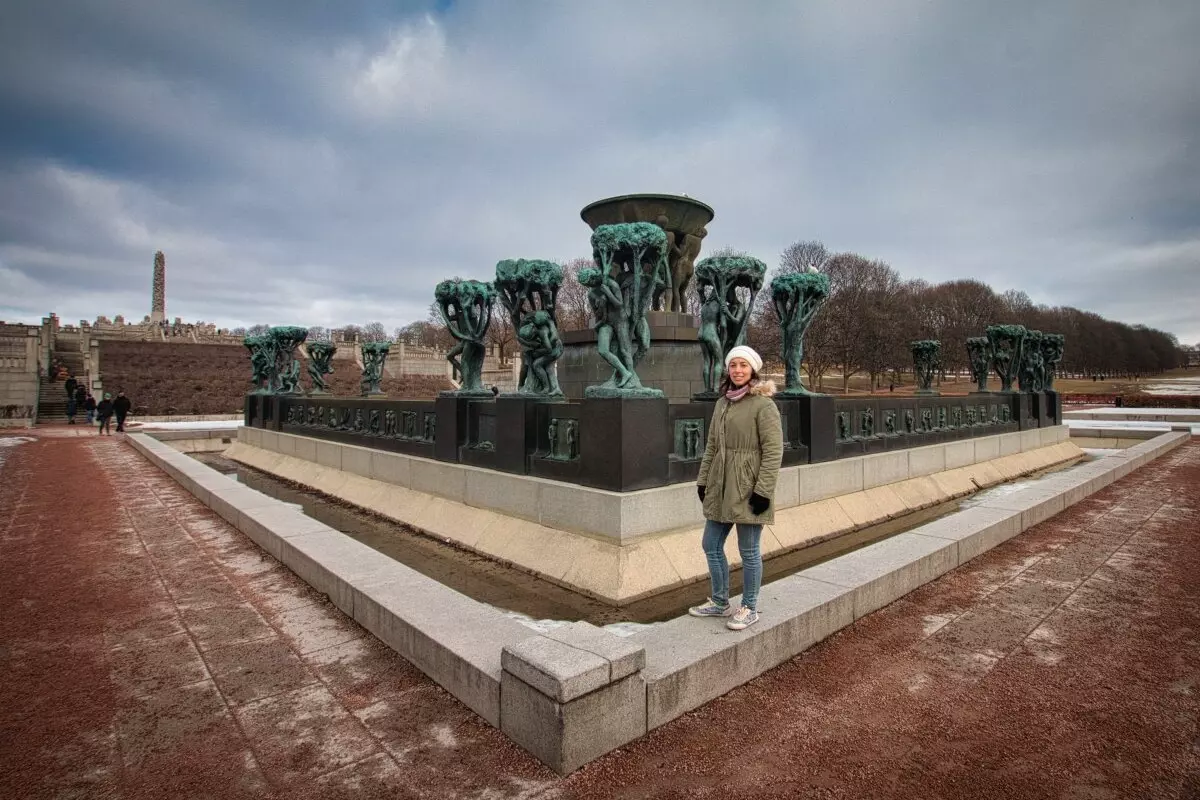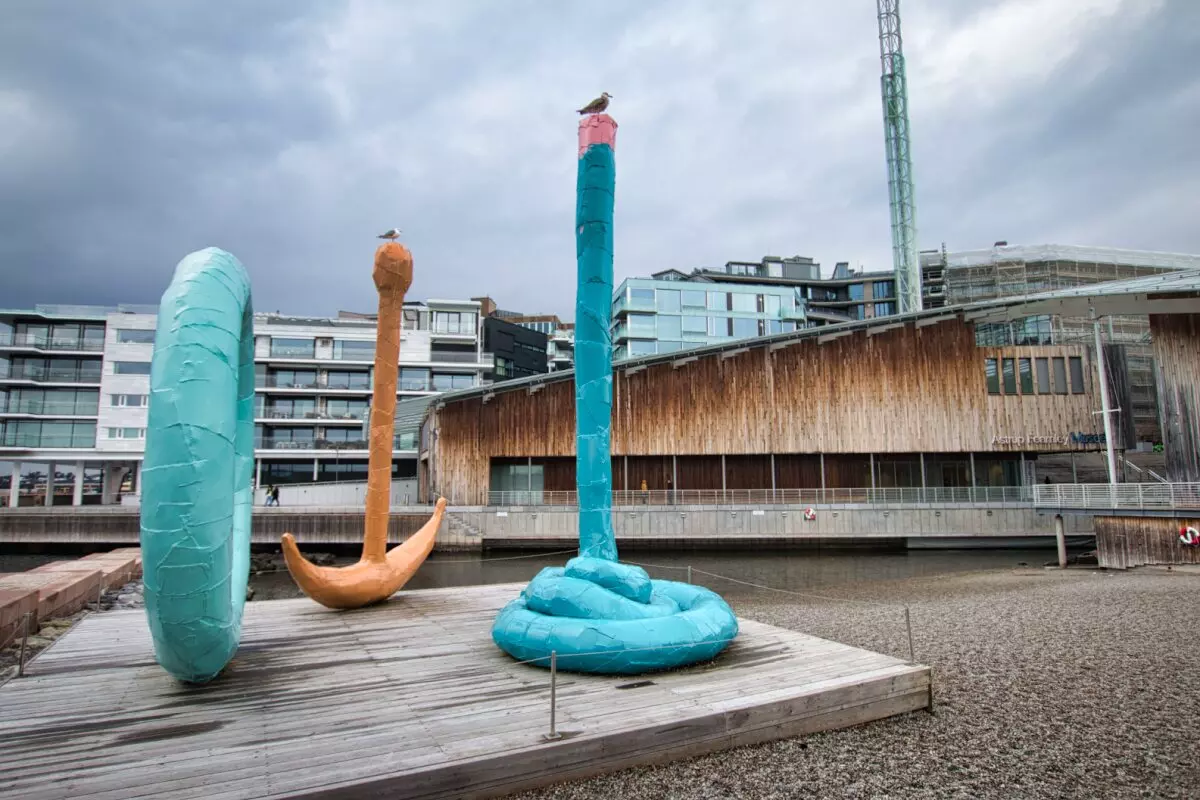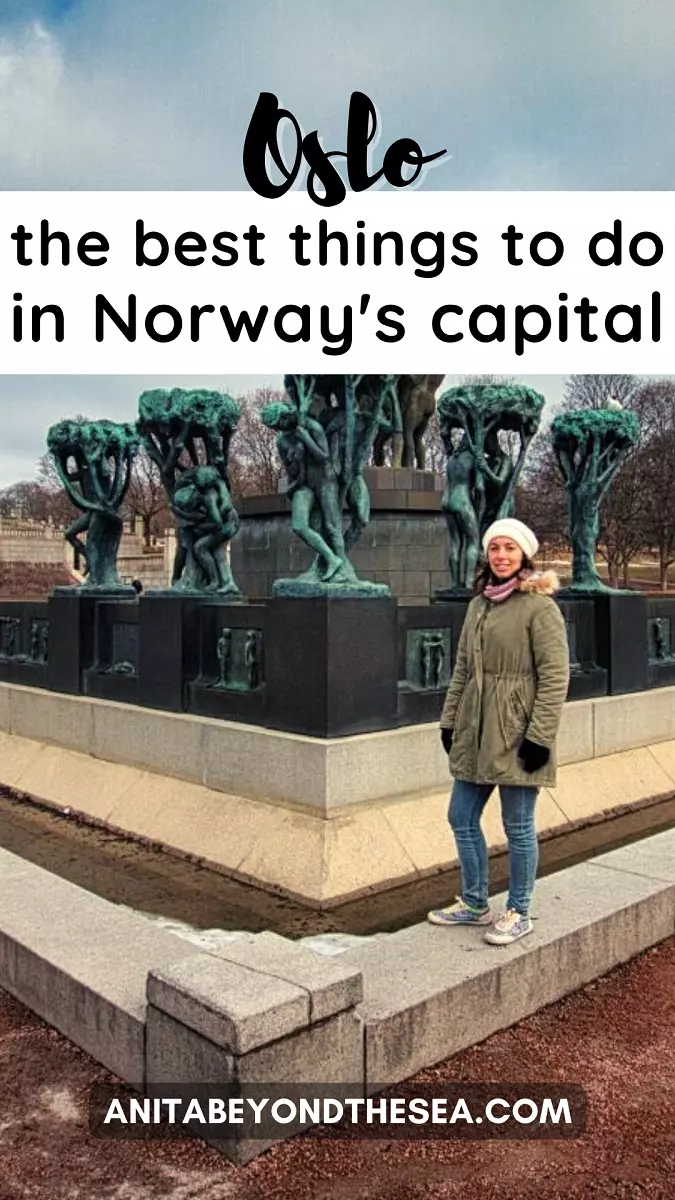Oslo is a vibrant and cosmopolitan destination that offers visitors a unique blend of modern urban culture and traditional Scandinavian charm. With its stunning natural scenery, captivating museums, and futuristic architecture, Oslo has something to offer every traveler. In this article, we will explore some of the best things to do in Oslo, from exploring historic landmarks to world-class museums, we also included a boat tour. Let’s go!
Disclosure: anitabeyondthesea.com is reader-supported. When you make a reservation through links on my site, I may earn an affiliate commission, at no extra cost for you. That will help me keep the blog up and running. Thank you!
Table of Content
- Visit the Fram Museum and Kontiki Museum
- Take a stroll in Vigeland Park and Vigeland Museum
- Take a boat tour of the Oslo Fjord
- Explore the Barcode Project and Oslo Opera House
- Akershus Fortress
- Munch Museum
- Norsk Folkemuseum
- The Royal Palace
- Aker Brygge
- Frequently Asked Questions
- Conclusion
Visit the Fram Museum and Kontiki Museum
Commonly known as the Museum’s Island, Bygdøy is a peninsula in front of Oslo city center. It’s home to the Norwegian Museum of Cultural History (partly an open-air museum), the Viking Ship Museum (unfortunately temporarily closed for renovations), the Norwegian Maritime Museum, and last but not least two of the most incredible museums for explorer lovers: the Fram Museum and Kontiki Museum.
I must confess that as a history passionate, I’m always fond of this type of museum dedicated to the exploration and people who changed history with their discoveries. But even knowing so, I was still blown away by the narrative of both museums. If I only had time for one thing to do in our best things to do in Oslo list, these would be my go-to choices!
The museums are adjacent one another, for this reason they are presented as a single activity.

The Fram Museum
The Fram Museum is a must-visit for anyone interested in polar exploration and Norwegian maritime history. The museum is dedicated to the famous Norwegian polar ship, Fram, which was used by explorers Fridtjof Nansen and Roald Amundsen in their expeditions to the Arctic and Antarctic regions.
The museum showcases the history of the Fram, its crew, and the expeditions it undertook, with fascinating exhibits and interactive displays that bring the story to life. Visitors can also go on board the ship itself and explore its cabins, engine room, and other areas.
Opening hours: 10 AM to 5 PM (September to April) and 9.30 AM to 6 PM (May to August).
Fram Museum website.

The Kon-Tiki Museum
Attached to the Fram Museum, the Kon-Tiki Museum is another fascinating museum in Oslo that showcases the spirit of adventure and exploration. The museum is dedicated to the famous Norwegian explorer, Thor Heyerdahl, and his expeditions on the Kon-Tiki raft and the Ra (I and II) reed boats.
Visitors can see the original vessels used by Heyerdahl in his expeditions, as well as other exhibits that detail his life and work. The museum also houses a collection of artifacts and objects from Heyerdahl’s travels.
Opening hours: 10 AM to 5 PM (September to April), 10 AM to 6 PM (May), and 9.30 AM to 6 PM (June to August).
Kon-Tiki Museum website.
With their unique exhibits and thrilling stories of exploration, both museums are a must-visit for anyone interested in the history of adventure and discovery.

Take a stroll in Vigeland Park and Vigeland Museum
The park is home to over 200 bronze, granite, and cast iron sculptures created by the Norwegian sculptor Gustav Vigeland. The sculptures depict human figures in a variety of poses and expressions, and they are set against a backdrop of lush gardens and fountains. The park is a popular spot for picnics, jogging, and relaxing, and it’s open 24 hours a day.
The museum, which is a few meters outside the park, displays the works of Gustav Vigeland, one of Norway’s most influential artists. And includes sketches, models, and plaster casts of his sculptures from his early years to his final unique style. It’s a great place to learn more about the artist and his creative process, including the creation of the adjacent Vigeland Park.
Opening site: Closed on Monday and from 12 to 4 PM from Tue to Sun.
Vigeland Museum and Park website.

Take a boat tour of the Oslo Fjord
A boat tour of the Oslo Fjord is a fantastic way to experience the stunning natural beauty of Norway’s coastline and get a unique perspective on the city of Oslo. The fjord, which stretches over 100 kilometers from the Oslofjord to the town of Halden on the Swedish border, is dotted with picturesque islands, quaint fishing villages, and lush forests.
You can board a 2 hours sightseeing boat tour from Oslo’s harbor. The choice is between an electric, modern, and ecological boat or an elegant sailing ship. The cruise will lead you through the fjord’s tranquil waters, passing by iconic landmarks such as the Oslo Opera House and the Akershus Fortress. The tour guides offer informative commentary on the history and geography of the region, and passengers can enjoy refreshments and snacks on board.

Explore the Barcode Project and Oslo Opera House
The Barcode Project is a striking architectural complex in the heart of Oslo, that is definitely worth visiting. It consists of a series of high-rise buildings, each with a unique design and distinct character, that together form a sleek and modern urban landscape.
Visitors can stroll close to the waterfront promenade and marvel at the buildings’ angular shapes and glass facades, which reflect the surrounding natural beauty and cityscape. The Barcode Project is also home to shops, cafes, and restaurants, making it a great place to eat and relax after your explorations.
Very close to the Barcode Project, the Oslo Opera House is a stunning cultural landmark in Oslo, Norway, that is a must-visit destination for music and architecture lovers. The building’s unique design, which resembles a glacier floating on the Oslo Fjord, is an impressive feat of engineering and has become an iconic symbol of the city.
Visitors can take a guided tour of the opera house (from Monday to Saturday at 1 PM and 2 PM on Sunday), which includes behind-the-scenes glimpses of the production facilities, rehearsal rooms, and dressing rooms. The opera house also hosts a variety of world-class performances, from opera and ballet to contemporary music and theater.
The Norwegian Opera & Ballet website.

Akershus Fortress
Akershus Fortress is a historically significant and impressive landmark in Oslo, Norway. The fortress was built in the late 13th century and has served various purposes throughout history, including as a royal residence, military stronghold, and prison. The location of the fortress on the waterfront provides visitors with picturesque views of the Oslofjord and the city skyline. Those who visit can explore the castle grounds, which include numerous buildings and towers, each with its unique history and significance.
Visitors can also learn about the fortress’s rich history through the various exhibits and displays. The fortress is open to the public daily, with varying opening and closing times depending on the season. As one of Oslo’s most significant historical sites, Akershus Fortress is a must-visit for anyone interested in learning more about Norway’s past.
Opening hours: the fortress’ gates are open from 6 AM to 9 PM, to visit the museums and interiors check the website’s information.
Akershus fortress website.

Munch Museum
The museum takes its name from the Norwegian painter Edvard Munch, who is widely considered to be one of the most important artists of the modern era. The collection includes paintings, prints, and drawings, as well as personal belongings and photographs. An interactive reconstruction of Edvard Munch display also everyday objects from the painter’s life.
Some of Munch’s most famous works, such as “The Scream” and “Madonna,” are part of the museum’s permanent collection. The Munch Museum also hosts temporary exhibitions (mostly focused on modern art), educational programs, and events that explore the artist’s life and work, as well as contemporary art and culture. With its rich collection and diverse offerings, the Munch Museum is a must-see destination for art lovers and anyone interested in the life and legacy of Edvard Munch.
Pro Tip: Munch created different versions of “Skrik” (from Norwegian “The Scream”). In the museum area dedicated to it, there are three versions on display: a painting, one version in pastels, and a lithograph. To avoid the wear of time from the exposure to the light the three works of art are exhibited in rotation, one hour each. To increase your chances to see all of them, go directly to the 4th floor at the exhibition Edvard Munch Infinite when you enter.
Opening hours: 10 AM to 6 PM (Sun to Tue) and 10 AM to 9 PM (Wed to Sat).
Munchmuseet website.

Norsk Folkemuseum
Norsk Folkemuseum is a fascinating open-air museum, in the Bygdøy peninsula, that showcases the history and culture of Norway through its architecture, artifacts, and exhibitions. The museum covers over 150 acres and features over 150 buildings from various regions and periods of Norwegian history. Including farmhouses, stave churches, and artisan workshops.
Visitors can explore the meticulously recreated historic interiors, learn about traditional Norwegian crafts, and watch live demonstrations of everything from weaving and pottery to woodworking and blacksmithing. The museum also offers a range of interactive exhibits and activities, such as horse-drawn carriage rides and traditional games, making it a great destination for families and anyone interested in Norwegian culture and heritage.
Note: check out the museum’s agenda to know their activities.
Opening hours: 11 AM to 4 PM Tuesday to Sunday (Oct to April), 10 AM to 5 PM (May to Sep).
Norsk Folkemuseum website.

The Royal Palace
The Royal Palace is the official residence of the Norwegian monarch and one of the most iconic landmarks in Oslo. It was designed by the Danish architect Hans Linstow in the neoclassical style and completed in 1849.
When visiting in the summer months, you can take a guided tour of the palace, which includes the ceremonial halls, banquet rooms, and private apartments of the royal family. The palace is also surrounded by beautiful gardens, fountains, and sculptures, which are open to the public year-round.
Even when a visit to the interiors is not possible, a walk through the gardens and the elegant area nearby is worth it, including the National Theater and Norwegian Parliament.

Aker Brygge
Aker Brygge is Oslo’s bustling waterfront district. The area was formerly a shipyard but has been transformed into a modern and stylish urban space, featuring a mix of shops, restaurants, cafes, and bars, as well as a marina for boats and yachts.
Aker Brygge is a popular destination for locals and visitors, who come to soak up the lively atmosphere and enjoy the stunning views of the Oslo Fjord. The area is also home to several cultural institutions, such as the Nobel Peace Center and the Astrup Fearnley Museum of Modern Art.
When visiting you can take a stroll along the waterfront promenade, go find the many modern installations in the alleys or outside the Astrup Fearnley Museum, or sample some of the local seafood at one of the many restaurants and bars.

Frequently Asked Questions
Is Oslo worth visiting?
Yes, it’s indeed worth visiting because of the landmarks and activities mentioned above, but not only. Oslo is situated in the middle of a beautiful natural area. Fjords, woods, and lakes, if you want to test outdoor adventures you won’t have to go far from Norway’s capital.
How many days do I need to visit Oslo?
If you don’t have a ton of activities on your schedule, 2 days are enough to see all the major landmarks and activities the city has to offer.

Is Oslo expensive?
There is no doubt that Oslo is one of the most expensive cities in the world. Keep that in mind when planning your itinerary. Food and activities especially are more expensive than in many other capitals. On the other hand, public transport is more accessible thanks to daily passes for ferries, trams, and the metro.
Conclusion
Whether you’re a history buff, a foodie, or an architecture enthusiast, Oslo has something to offer everyone. So, whether you’re planning a short city break or a longer vacation, be sure to check out some of these top things to do in Oslo, and experience the best that the city has to offer.
Are you traveling to Norway soon? Check out our guides and day trips in Oslo and the Lofoten and Vesteralen Islands.
Have you liked this post? Sharing is caring!



